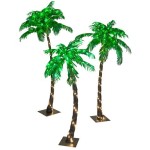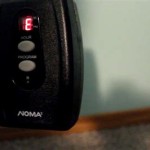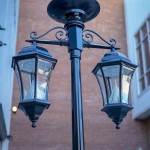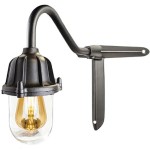How To Protect Outdoor Solar Lights From Rain and Snow
Outdoor solar lights offer an energy-efficient and aesthetically pleasing way to illuminate gardens, pathways, and patios. However, their continuous exposure to the elements, particularly rain and snow, presents a significant challenge to their longevity and performance. Understanding how to protect these lights is crucial for maximizing their lifespan and ensuring consistent brightness throughout the year.
The susceptibility of solar lights to weather damage stems from several vulnerabilities. Their electronic components, including the solar panel, battery, and LED, are sensitive to moisture. Water ingress can lead to corrosion, short circuits, and ultimately, failure of the light. Furthermore, accumulated snow can block sunlight from reaching the solar panel, hindering the charging process and reducing the light's operational time. The plastic or metal housings can also degrade over time due to prolonged exposure to UV radiation, freezing temperatures, and harsh weather conditions. This article will explore effective strategies to safeguard outdoor solar lights from the damaging effects of rain and snow.
Understanding the Vulnerabilities of Solar Lights to Weather
Before implementing protective measures, it is essential to recognize the specific vulnerabilities of solar lights to rain and snow. The solar panel, typically made of silicon, is generally sealed with a protective layer; however, cracks or degradation of this layer can allow water penetration. The battery, usually a rechargeable Ni-MH or lithium-ion type, is particularly susceptible to damage from moisture. Corrosion can occur at the battery terminals, reducing its capacity and lifespan. The LED itself can also be affected by water, leading to dimming or complete failure. The housing, often made of plastic or metal, can become brittle and crack in cold temperatures, allowing water to seep inside.
Rain can enter the light through various openings, such as the seams between the housing components, the switch, or the wire connections. Even a small amount of water can cause significant damage over time. Snow, when melting, can also seep into these openings. Furthermore, the weight of accumulated snow can physically damage the light, particularly if it is made of flimsy materials. Ice formation can also exert pressure on the housing, leading to cracks and leaks. Therefore, a comprehensive approach to protection must address these various vulnerabilities.
Another significant factor is temperature fluctuation. Repeated freezing and thawing cycles can cause expansion and contraction of the materials, further exacerbating any existing weaknesses and accelerating the degradation process. The battery's performance is also affected by temperature; cold temperatures reduce its capacity and efficiency. Understanding these vulnerabilities is the first step in developing effective protection strategies.
Implementing Protective Measures Against Rain
Protecting solar lights from rain involves several proactive measures aimed at preventing water from entering the housing and damaging the internal components. One of the most effective strategies is to apply a waterproof sealant to all seams and openings. This can be done using a silicone-based sealant, specifically designed for outdoor use. Before applying the sealant, ensure the surfaces are clean and dry. Carefully apply the sealant along the seams, around the switch, and where the wires enter the housing. Allow the sealant to cure completely according to the manufacturer's instructions.
Another important step is to inspect the lights regularly for any signs of damage, such as cracks or loose components. Address these issues promptly to prevent water from entering. If the housing is made of plastic, consider applying a UV protectant to prevent it from becoming brittle and cracking in the sun. This will also help to maintain the color and appearance of the lights.
Proper placement of the lights can also contribute to their protection from rain. Avoid placing them in areas where they are exposed to direct rainfall or runoff. For example, avoid placing them directly under gutters or downspouts. Consider mounting them under eaves or overhangs to provide some shelter from the rain. Ensure that the lights are positioned in a way that allows water to drain away from them, rather than pooling around the base.
Furthermore, consider the quality of the solar lights themselves. Investing in higher-quality lights with better seals and more durable materials can provide a greater level of protection against rain. Look for lights that are specifically designed for outdoor use and have a high waterproof rating (IP rating). A higher IP rating indicates a greater level of protection against water ingress.
Regular cleaning can also help to prevent water damage. Dirt and debris can accumulate on the solar panel and housing, trapping moisture and promoting corrosion. Clean the lights regularly with a soft cloth and mild soap. Avoid using harsh chemicals or abrasive cleaners, as these can damage the finish and seals.
Strategies for Protecting Solar Lights from Snow
Protecting solar lights from snow requires a different set of strategies, primarily focused on preventing snow accumulation on the solar panel and protecting the housing from the weight and pressure of snow. One of the most effective methods is to regularly remove snow from the solar panel. This can be done using a soft brush or cloth. Avoid using sharp objects that could scratch or damage the panel. Removing the snow allows sunlight to reach the panel and charge the battery.
Consider raising the lights off the ground to prevent them from being buried in snow. This can be done by mounting them on posts or stakes. The higher the lights are positioned, the less likely they are to be covered by snow. This is particularly important in areas that receive heavy snowfall. Ensure that the posts or stakes are sturdy enough to withstand the weight of the lights and any accumulated snow.
If possible, consider storing the solar lights indoors during periods of heavy snowfall. This is particularly recommended for lights that are not designed for extreme weather conditions. Storing them indoors will protect them from the weight of the snow and the potential for water damage. Before storing the lights, clean them thoroughly and dry them completely. Store them in a cool, dry place.
For lights that are difficult to move, consider using weather-resistant covers to protect them from snow and ice. These covers should be made of a durable, waterproof material and should fit snugly over the lights. The covers will prevent snow from accumulating on the solar panel and protect the housing from the elements. Ensure that the covers are securely fastened to prevent them from being blown away by the wind.
In areas with frequent freezing rain or ice storms, consider applying a de-icing spray to the solar panels. This will help to prevent ice from forming on the panel and blocking sunlight. Be sure to use a de-icing spray that is specifically designed for use on solar panels and will not damage the surface. Follow the manufacturer's instructions carefully.
Choosing solar lights with robust designs and materials prepared for snow is essential. Lights with sloped surfaces on the solar panel will allow snow to slide off more easily, reducing the accumulation. Domes or other structures above the solar panels can also encourage the snow to roll off the panel.
Additional Tips for Extending the Lifespan of Outdoor Solar Lights
Beyond protecting solar lights from rain and snow, several other factors can contribute to their longevity and performance. One of the most important is to ensure that the solar panel receives adequate sunlight. Position the lights in a location where they will receive at least six to eight hours of direct sunlight per day. Avoid placing them in shaded areas or under trees. If necessary, trim branches or move the lights to a sunnier location.
Regularly clean the solar panel to remove dirt, dust, and debris. A dirty solar panel will not be able to absorb sunlight as efficiently, reducing the battery's charging capacity. Clean the panel with a soft cloth and mild soap. Avoid using harsh chemicals or abrasive cleaners.
Replace the batteries as needed. The batteries in solar lights have a limited lifespan and will eventually need to be replaced. The lifespan of the battery depends on the type of battery and the usage conditions. Regularly check the battery's performance and replace it when it starts to lose its capacity. Use replacement batteries that are specifically designed for solar lights.
Consider using solar lights with replaceable components. Some solar lights are designed with replaceable solar panels, batteries, and LEDs. This allows you to replace individual components as needed, rather than having to replace the entire light. This can save you money in the long run and extend the lifespan of your solar lights.
Follow the manufacturer's instructions for maintenance and care. The manufacturer's instructions will provide specific recommendations for maintaining and caring for your solar lights. Follow these instructions carefully to ensure that your lights are properly protected and maintained.
In conclusion, protecting outdoor solar lights from rain and snow requires a multi-faceted approach that addresses the vulnerabilities of the lights, implements protective measures, and provides ongoing maintenance and care. By following these strategies, one can extend the lifespan of the lights, ensure consistent brightness, and enjoy the benefits of solar lighting for years to come.

How To Outdoor Solar Lights For The Winter Istorage

Can You Leave Solar Lights Out In The Rain Conserve Energy Future

Does Rain Ruin Solar Lights Simple Lighting Blog

Snow Guards For Solar Panels What You Need To Know

The Best Solar Landscape Lights Of 2024 Popular Science

Do Solar Lights Need Direct Sunlight

Color Changing Solar Lights Outdoor Decorative Auto On Off Garden Temu

Snow 2 Outdoor Solar Lantern Lights For Hanging Garden Decoration Lanterns Waterproof

Dodohous Ready Stock Solar Lamp Outdoor Lights Waterproof Led Ip65 Light Lighting Sensor Streetlights Exterior Garden Decoration Garland Wall Lazada Ph

The 3 Best Smart Outdoor Lights For Backyards Of 2024 Reviews By Wirecutter







